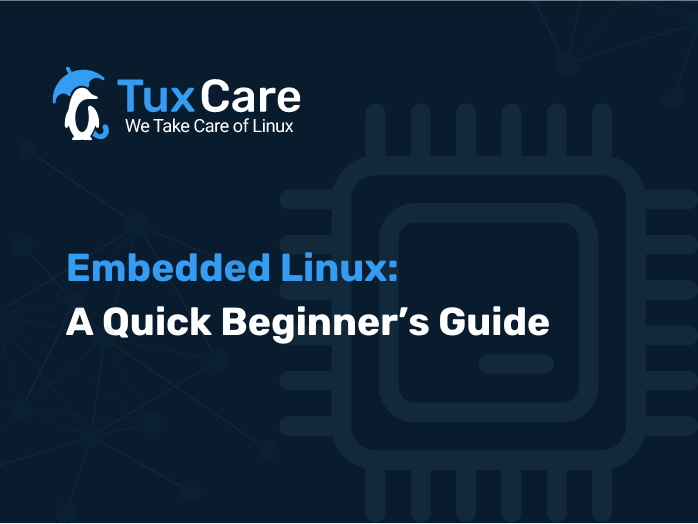Embedded Linux: A Quick Beginner’s Guide
What Is an Embedded System?
Before diving into embedded Linux, let’s first discuss what it’s used for: embedded systems.
There are embedded systems in everything: consumer goods, industrial machinery, telecommunications equipment, and even medical devices. Embedded systems are all around us, performing a specific function in real-time.
The complexity of embedded systems can vary, from a basic thermometer to contemporary smartphones. As more cutting-edge technologies, like machine learning, find their way into consumer electronics, there is increasing demand for capable embedded systems.
What Is Embedded Linux Used for?
A kernel is the heart of an operating system that manages the computer and its hardware’s operations, particularly the memory and CPU. To put it another way, the kernel serves as the interface between software and hardware.
A specific kind of Linux kernel called embedded Linux was created for embedded devices and appliances. It is essentially a compact version of Linux that enables the necessary features and services that are needed for the operating and application requirements of the embedded system.
While it still uses the same kernel, it’s very different from the standard Linux operating system. Embedded Linux is tailored to embedded systems, so it’s significantly smaller, needs less processing power, and includes fewer features – as it only needs to run device-specific applications.
Advantages of Embedded Linux
One core advantage of using Linux is the availability of standard network topologies and protocols. By properly selecting embedded hardware, you can use the same components throughout the network without worrying about CPU architecture.
Then, you can concentrate on developing a version of Linux that uses the drivers for the network and communications protocols that you want, as well as ensuring that the versions are consistent across all computers.
Another advantage of utilizing Linux is the availability of standard development and debugging tools. In this case, the provider of development platforms, compilers, editors, debuggers, and code analyzers can use the same tools on every Linux-supported architecture. Everything on the desktop is also available for the embedded server, sensor interface, and controller.
Furthermore, necessitating the usage of open-source software means that, in the worst-case scenario, the tools would need to be built – adding an hour or two to the development platform preparation process.
Debuggers and those who analyze code performance are the same way, therefore the cost of development software is the time spent obtaining and maybe constructing these tools. Purchasing these tools from third-party vendors, on the other hand, may cost tens of thousands of dollars.
You may also profit from centralized development servers using Linux as well. In the lab, developers may combine all of their development and debugging efforts on a single server or desktop workstation.
As a result, the code may be created on a single computer and then cross-targeted for every distinct processor architecture and debugged by deploying the programs to the native target.
Embedded Linux Development
In today’s market, practically all new embedded device projects choose Linux as their operating system of choice.
The open-source community is constantly enhancing Linux’s robust, adaptable kernel and runtime architecture, and hardware manufacturers are extending it to support more CPUs, buses, devices, and protocols.
By utilizing the strength and flexibility that a genuine multi-tasking operating system gives to embedded devices, projects involving embedded devices may frequently save hardware costs.
The Linux kernel and related open-source infrastructure form the nucleus of a new ecosystem for the development, testing, and deployment of embedded operating systems, infrastructure, and applications.
Conclusion
There are many reasons that embedded Linux has become so widespread as the ideal operating system for embedded devices and applications globally. Linux introduces higher levels of scalability, flexibility, and speed – making it easier to manage environments that include embedded systems.
Keeping those embedded systems updated with the latest security patches, however, remains a challenge.
Not only are embedded devices and appliances high-risk entry points for vulnerability exploits, but organizations are often forced to reboot systems to apply CVE patches as well as delay the deployment of critical patches until a scheduled maintenance window. Oftentimes, patching Linux vulnerabilities also involves downtime, interrupting service for customers.
Fortunately, with live patching automation, teams can ensure that all embedded systems using Linux receive the latest CVE patches without needing to reboot or schedule system downtime.
TuxCare’s live patching solution, KernelCare Enterprise, deploys in-memory Linux vulnerability patches automatically so that teams don’t need to reboot systems or delay patches until they can schedule a maintenance window.
With KernelCare, organizations minimize risk, accelerate patching lifecycles, and keep their systems secure without needing to interrupt access to the solutions they provide their customers.
Learn more about live patching here.



 Documentation
Documentation Login
Login



